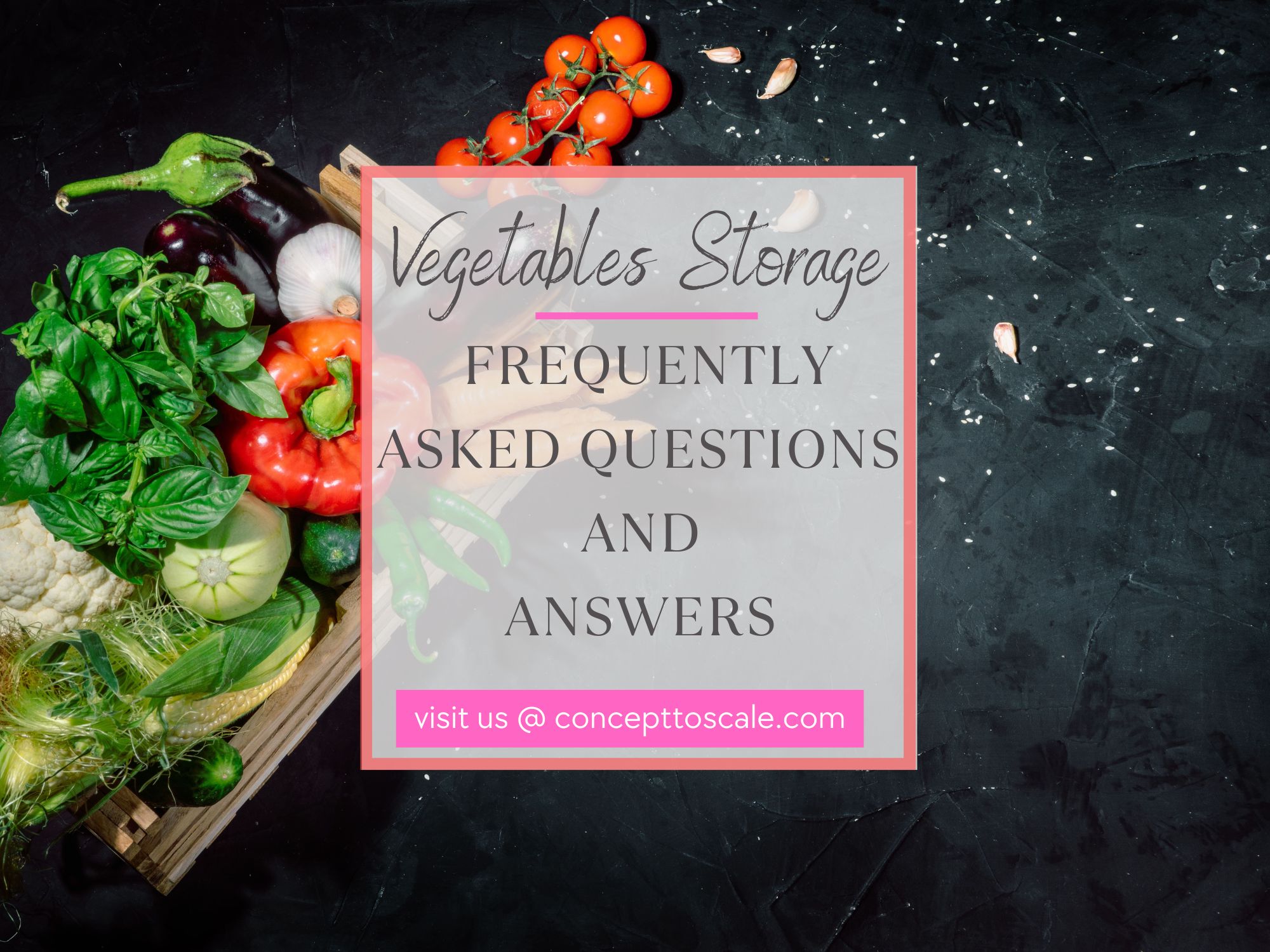This post may contain affiliate links which means I may receive a commission for purchases made through links. I only recommend products that I have personally used or curated specifically after reviewing and ensuring its quality! Learn more on my Private Policy page.
Rising cost of living – Introduction
With increasing costs at every turn, we as consumers, need to make every dollar stretch and count. In today’s challenging economic landscape, rising food prices, and in general the rising cost of living have become a significant concern for individuals and families striving to make every dollar last.
With the aftermath of the pandemic and other global events, the rising cost of living, inflation rates, and gas prices have skyrocketed, while wages have struggled to keep pace. As a result, many people have been forced to deplete their savings, remortgage their homes, or even face bankruptcy and job loss.
The ongoing conflict in Ukraine and other conflicts have further exacerbated the situation, causing the rising cost of living to continue to surge, adding to the financial strain faced by consumers. Additionally, the cost of food and transportation continues to rise, demanding immediate attention and a change in consumer habits.
In this post, I will explore the necessity of adapting our routines to counter rising prices and offer practical strategies to stretch our budgets effectively.
How to Survive Rising cost of living And How To Beat Inflation
Changing everyday routines to counter adverse conditions effectively involves understanding and recognizing our habits and behavior patterns and how our brains adapt to new behaviors. By recognizing the triggers that prompt our actions, we can modify them to create better habits. Our brains have the amazing ability to rewire themselves, allowing us to intentionally change our routines.
Making specific plans for when, where, and how we will act helps us follow through with our desired behavioral outcomes – such as, I will turn the tap off when brushing my teeth and then following through with it. Creating an environment that supports and reinforces our goals and provide feedback on our progress is also crucial.
By staying motivated, seeking support and resources, and being resilient, we can successfully navigate challenging circumstances. in this essay I layout some simple routines everyone can hopefully evolve into to mitigate adverse inflationary effects on prices and the overall rising cost of living.
If you’ve been to the grocery store lately, you’ll notice what $100 worth of groceries used to get you, is now cut in half. Here is an Article from Bloomberg indicating how much inflation / rising cost of living has adversely impacted food prices causing families to struggle to meet their needs – read it here.
The chart below is from that article and shows the inflationary pressures over the last 5 years. The years 2022 and 2023 have been disastrous for food and other consumer goods prices and the effects on the rising cost of living.

Rising cost of living – How To Prepare For Inflation
In this article “How To Survive Rising Cost Of Living: 17 Essential Habits To Counter Soaring Prices” I explore 17 essential habits to counter soaring prices, along with strategies and products that can help you make every dollar last as long as possible and hopefully lessen your expenses and the inflationary burden.
Some of the strategies proposed are simple low cost ideas that can be done tomorrow whilst others may require a more sustained effort. These are simple ideas on how to prepare for inflation at home.
1. Invest in High-Quality Fridge Fruit, Vegetable & Produce Storage Containers
To combat rising grocery prices, it is crucial to reduce waste and maximize the shelf life of perishable items. Investing in high-quality food, fruit, vegetable and produce storage containers can play a significant role in achieving this goal.
A good fridge storage container should be designed to preserve fruits and vegetables for extended periods. They must be BPA-free and ideally feature adjustable vents that help regulate airflow which creates an optimal environment for produce storage.
Premium containers usually have secure seals and colanders and crispers with elevated bases to lift the contents away from moisture in the bottom of the container and drains to get ride of excess moisture. These features extend the shelf life of stored fruits and vegetables.
Colanders and crispers also allow for easy, convenient rinsing and may contain partitions for keeping multiple contents separate. By minimizing spoilage, you save money and reduce waste.
Refer to our posts – Strategies and FAQs for Keeping Fruits and Veggies Fresh

2. Optimize Gas Consumption
With fluctuating gas prices, it is crucial to adopt strategies that minimize fuel expenses. Instead of waiting until the tank is empty, consider refueling more frequently to take advantage of average pricing.
Utilize apps like gas-buddy to track gas prices in your region and receive alerts on potential fluctuations. By gassing up when prices drop, you can save significantly over time compared to filling the entire tank at a higher cost per liter.
This proactive approach to managing fuel expenses can make a noticeable difference in one’s budget. I have noticed that in my area gas prices tend to fall on weekday evenings, and in particular on Sunday evenings. You may want to do your homework within your area.
3. Harness Technology
The FlippApp and others, is an excellent tool that ensures you never miss a sale and helps you find the lowest prices for products you need, including groceries and household items.
By aggregating the latest flyers from nearby stores such from Big Box Stores such as Walmart, Home Depot, Lowes, Large Chain Grocers and Drug Stores, this app enables users to compare prices and make informed purchasing decisions.
Leveraging technology not only saves money but also streamlines the shopping experience, allowing you to allocate limited resources efficiently.
4. Embrace Meal Planning and Batch Cooking
Meal planning and batch cooking are indispensable practices when it comes to countering rising grocery prices. By carefully planning meals for the week and preparing larger quantities of food in advance, individuals can save both time and money.
This approach allows for buying ingredients in bulk, taking advantage of sales, and minimizing food waste through batch cooking and storing either in compartment meal prep containers or other containers in portions.
Moreover, batch cooking provides ready-to-eat meals or pre-prepared components that can be easily assembled during busy weekdays. By incorporating these practices into your routine, you can optimize your grocery budget and ensure that every dollar is utilized effectively.
If you are on a high protein diet or have a large family buying and preparing batches of high protein meals can prove beneficial to shop in bulk at Costco or other bulk buying depots.
5. Operating Home Air Conditioning/Heating Unit efficiently
Operating a home air conditioning/heating unit efficiently during the summer/winter can help reduce energy costs while keeping your space cooled/heated comfortably. First, set the temperature wisely: Keep the thermostat set at a reasonable and comfortable temperature.
Aim for a temperature that is slightly higher (lower in winter) than your desired comfort level, as each degree lower(summer)/higher (winter) can significantly increase energy consumption.
Utilize programmable thermostats: Use a programmable thermostat to adjust the temperature automatically based on your schedule. Set it to adjust the temperature when you’re away or at home.
One thing I found that works excellently is the use of fans – depending on your circumstance you can use a freestanding, oscillating or a utility fan. The latter can be used at home or at the job site.
Supplementing the air conditioner with ceiling or portable fans to help circulate the cool air more efficiently works wonders whilst keeping the thermostat at a reasonable temperature. Fans create a wind-chill effect, making you feel cooler without needing to lower the thermostat in summer.
When buying ceiling fans, portable fans, air conditioning, heating unit or even small appliances such as mixers, countertop ovens, or electric cookers or the like – always compare different brands and models, read customer reviews, and consult online resources to gauge their energy efficiency reputation.
Look for appliances with adjustable temperature controls, timers, and energy-saving modes, as these features can help optimize energy usage.
6. Spend More Time Outdoors To Reduce Energy Consumption
Save money on energy costs during the summer by spending time outdoors under a gazebo, patio umbrellas or tents in the backyards as an alternative to staying indoors and cranking up the air conditioning units. Tents can create a cool shaded outdoor living space where you can relax and spend time with family and friends.
Outdoor shade structures come in many styles – some are open on all sides whilst others are fitted all around to keep the bugs away. Either way it is best to ensure adequate ventilation flows through.
Arrange your schedule to spend more time outdoors during early mornings or late evenings when temperatures are typically lower. If the sun heats the backyard during the early mornings or afternoon and the front at night this provides the perfect opportunity to take full advantage and maximize time spent outdoors, especially if you work from home.
This allows you to enjoy the outdoors comfortably without the need for air conditioning. Take every opportunity to cook outdoors utilizing outdoor cookers, BBQ grills or other suitable cookers and equipment to prepare meals as often as possible as doing so minimizes heat buildup indoors and reduces the need for air conditioning while cooking.
7. Explore Alternative Grocery Shopping Options
In the quest to reduce grocery expenses, it is essential to explore alternative shopping options beyond traditional supermarkets. Consider visiting local farmers’ markets, co-ops, or ethnic grocery stores that often offer more affordable prices on fresh produce and pantry staples.
Additionally, online grocery shopping platforms may offer exclusive discounts and promotions. Compare prices and explore different sources to find the best deals and quality products. By diversifying your shopping experience, you can discover new avenues for savings.
8. Emphasize Plant-Based and In-Season Foods
Rising meat and dairy prices has significantly impacted grocery budgets. To counter this, consider incorporating more plant-based meals or substitutes into your diet. Plant-based proteins or substitutes made from legumes, lentils, and tofu are often more affordable alternatives to meat.
When buying substitutes be selective ensuring it is from a trusted source, organic or non modified base products are preferred. However, it may be more costly. Additionally, prioritize purchasing in-season fruits and vegetables, as they tend to be more abundant and cost-effective.
By embracing a plant-based and seasonal approach to your meals, you can reduce costs while promoting a healthier lifestyle. One particular site which explores this idea is from Harvard University.
9. Utilize Store Loyalty Programs and Coupons
Store loyalty programs and coupons are valuable tools for saving money on groceries. Sign up for loyalty programs offered by your favorite supermarkets to access exclusive discounts and rewards.
Additionally, in addition to utilizing the FlippApp, scour newspapers, online coupon websites, and retailer apps for coupons that can be applied to your shopping. By leveraging these discounts and loyalty programs, you can maximize your savings and lower your overall grocery expenses.
Make sure to inquire for these opportunities at your local “mom and pop stores”, big box stores or local stores.
10. Cultivate a Home Garden to Curve Grocery Prices due to Rising Cost of Living
One of the most cost-effective ways to supplement your vegetable and fruit needs is by cultivating an outdoor home garden, a greenhouse or a hydroponics growing system.
Whether you have a spacious backyard or limited space on a balcony or windowsill, growing your fruits, vegetables, and herbs can yield substantial savings. Seeds and starter plants are relatively inexpensive, and the joy of harvesting your produce is an added bonus.
Not only will you reduce your reliance on store-bought produce, but you will also enjoy the freshness and taste of homegrown ingredients. There are many good sources online. I encourage you to explore and begin your own journey to be self sufficient at least during summer or productive months of the year.
You may even be able to preserve surplus produce for use during the winter months.
11. Embrace DIY Kitchen Staples
Many pantry staples can be prepared at home for a fraction of the cost of store-bought alternatives. Explore making items like bread, granola, sauces, dressings, and spice blends from scratch.
DIY kitchen staples not only offer cost savings but also allow for customization based on personal taste preferences and dietary restrictions. By incorporating more homemade items into your culinary repertoire, you can reduce your reliance on expensive pre-packaged products.
There are many online blogs and resources to help you learn how to bake assuming of course you are open to learning and have the necessary baking cookware – two resources I found include King Arthur Baking and the The Rolling Pin.
Please note, I have no affiliation to any of these, nor I am endorsing them. I am simply sharing base on my research of available resources. I myself have recently engage in the act of baking. Will report soon on my excursions.
12. Practice Portion Control and Reduce Food Waste
Practicing portion control and minimizing food waste are crucial habits for reducing grocery expenses. Be mindful of serving sizes and avoid preparing excessive amounts of food that may go uneaten. Utilize leftovers creatively by sealing or refreezing, and repurposing them into new meals or freezing them for future use – through food preservation habits.
Moreover, implement proper storage techniques to extend the shelf life of perishable items. By consciously managing portions and reducing food waste, you can save money while also contributing to a more sustainable lifestyle.
There are many vegetable, fruit and food storage solutions on the market – you simply have to find the best storage containers and food vacuum sealers for your cooking habits and food choices.
13. Seek Out Community Resources
In challenging times, it is essential to tap into community resources that can alleviate the burden of rising grocery prices. Explore local food banks, community gardens, or cooperatives that offer affordable or subsidized produce.
Engage with neighbors and friends to organize bulk buying initiatives, where you can purchase items in larger quantities at discounted rates. By fostering community connections and harnessing collective resources, individuals can find support and make their dollars go further.
14. Turn Off All Lights When Not In Use
Turn off all non essential lights when not at home or keep only the ones you need illuminated. This can be achieved by installing smart timer switches which can turn lights and/or exhaust fans off after a predetermined set time.
Similarly, smart dimmers switches can be used to reduce power usage, or motion sensors switches to turn lights off once you have left a room or space. I have found these to be very useful in adapting to the inflationary pressures to the cost of running a home.
Often times we exit a room leaving the lights on with thoughts of eventually returning or perhaps we just can’t be bothered. In those cases we can opt for wifi smart switches where we can operate lights/fans from our smart phones even when away from home.
Installing any one of the aforementioned switches will help de-energize non-essential lights and exhaust fans which helps us curb our habits. Also, if we unplug non-essential small appliances and we would save more than a “pretty penny” on your electricity bill, guaranteed!
15. Buy Power Efficient Home Appliances
Purchase Energy Efficient Appliances
When it comes to determining the most power-efficient kitchen appliance, there are several important factors to consider. Start by looking for appliances with an Energy Star label, as these have been certified for their energy efficiency.
Check the appliance’s energy consumption information, typically displayed on the product or in the manual, and look for lower kilowatt-hour (kWh) ratings, as these indicate lower energy usage.
Next, examine the overall design and features of the refrigerator. Refrigerators come in all shapes and sizes and for various uses – beverage refrigerators, mini fridges, deep freezers, compact fridges and full size refrigerators.
Always Opt for models with efficient insulation, sealed doors, and energy-saving options like temperature controls and power-saving modes. Additionally, consider the size and capacity of the refrigerator.
Match Your Purchase to Your Needs
Choosing a size that matches your needs without being excessively large can help minimize energy consumption. Research and compare different brands to assess their reputation for energy efficiency and reliability.
Read customer reviews, consult professional product reviews, and how to select an energy efficient refrigerators, washers and dryers, or dishwasher visit manufacturer websites for detailed information on each brand’s performance, durability, and customer satisfaction.
For large / full size washers its usually best to visit your local hardware or appliance store for reasons explained in our blog post article.
For large appliances especially, it is important to ensure you undertake a comprehensive comparison considering all the factors before initiating purchase. In our blog post – Kitchen Appliances – How To Select The Best Appliances For Kitchens we outline all the steps and information you would need to perform the comparison.
Although the article focuses on kitchen appliances the methodology is exactly the same for all appliances, large and small.
Furthermore, consider the long-term costs of owning the appliance look for models with extended warranties, as they can save you money on potential repairs or replacements down the line.
Compare the prices of different brands, taking into account factors like purchase price, energy efficiency, and estimated operating costs. By carefully evaluating Energy Star certifications, energy consumption information, design features, brand reputation, and long-term costs, you can make an informed decision on which brand of appliance is both power efficient and cost-effective to own.
One last tip – it is usually a good idea to buy warranty on large appliance purchases – things are not made like they use to anymore! But be selective if may not be a good idea in all cases depending on the cost of the warranty versus the cost of replacing the appliance.
16. Run Laundry and Dish Washers at off Peak Times
Try to use your laundry washer and dishwasher during non-peak electricity rate periods/times to reduce costs. In addition try to keep your loads average – rather than do several small and frequent loads.
For large / full size washers and dryers its usually best to visit your local hardware or appliance store – please refer to our blog post article for details.
Use a clothes line or drying rack to dry your clothes – especially those that don’t need to go into the dryer. Inquire from your local state or province agency or power authority what time off peak electrical rates begin and plan accordingly. Usually it begins after 6pm on weekdays and last all weekend with my area.
Just like every other home appliance always ensure your are buying the most Energy Efficient appliance you can afford.
17. Turning Off Water When Not in Use Dampens the effects of Rising Cost of Living
One of the most significant ways to reduce household cost is to reduce water consumption. Have you ever brushed your teeth and let the water run? Yes, I have as well and it really is a waste of water.
It is estimated that 4 gallons of water is wasted by letting the water run whilst brushing ones teeth. Smart faucets and automatic touchless adaptors are useful in helping us curb our habits.
For a 3 person household brushing twice a day, this results in 48gallons daily, 1,440gallons monthly, or 17,280gallons annually. If we add other potential sources of water wastage such as showering (which represents 17% of household water usage – see Article in Washington Post), and lawn irrigation this number can increase astronomically.
Watering with a typical sprinkler using a standard garden hose for one hour supplies about 1,020 gallons of water. If performed 3 times weekly this results in about 12,240 gallons per month.
Assuming 20% of irrigated water is wasted, this gives 2,448 monthly, and 14,688gallons annually (assuming 6months/year irrigation). For irrigation of small areas or for watering flower beds 50gallon rain barrels are a great solution as it collects rain water for reuse in those applications, which is very cost efficient to conserve water.
In addition water wasted during showering has the cascading effect of escalating the household heating bills. Consuming this additional amount of potable water adds an unnecessarily burden to both your water bill and your heating bill.
Curbing your habits about water use will benefit your pocketbook immensely. Using touchless shower systems can also revolutionize your showering habits and alleviate water wastage.
Please read our blog post – How To Select The Best Shower Head for your shower remodel of shower head replacement. Also, see the Best Shower Heads for 2023.
Rising cost of living
As the cost of groceries and consumer goods continues to rise. We have proposed that each household can adopt these 17 essential habits on how to beat inflation.
These habits includes – investing in high-quality food storage containers, optimizing gas consumption, utilizing technology, embracing meal planning and batch cooking, exploring alternative shopping options, emphasizing plant-based and in-season foods, leveraging store loyalty programs and coupons, cultivating home gardens, buy power efficient home appliances, embracing DIY kitchen staples, practicing portion control and reducing food waste, seeking out community resources, run laundry and dish washers at off peak times , turn off water when not in use, and turn off all lights when not in use.
Individuals can navigate the world of rising costs with resilience and resourcefulness. With each habit adopted, the potential for financial savings and increased value for every dollar spent grows.
Conclusion
By making conscious changes to our routines and embracing these habits, we empower ourselves to thrive amidst the current economic landscape and with the hope of securing a more sustainable outcome in the future – when wages will catchup with inflationary pressures.
Changing everyday routines to counter tough situations effectively involves taking certain actions, or changing them to create better habits and associated outcomes. Our brains can change and learn new things, which allows us to intentionally change our routines especially when our livelihoods depends on the outcomes.
Making specific plans for when, where, and how we will do things helps us stick to our new habits. In addition, creating an environment that supports our goals and getting feedback (from and to kids, wives and husbands, co-workers, friends) on our progress is also important.
By staying motivated, seeking support, exploring available resources, and being resilient, we can handle difficult circumstances successfully, however long and pronounced they promise to last.












